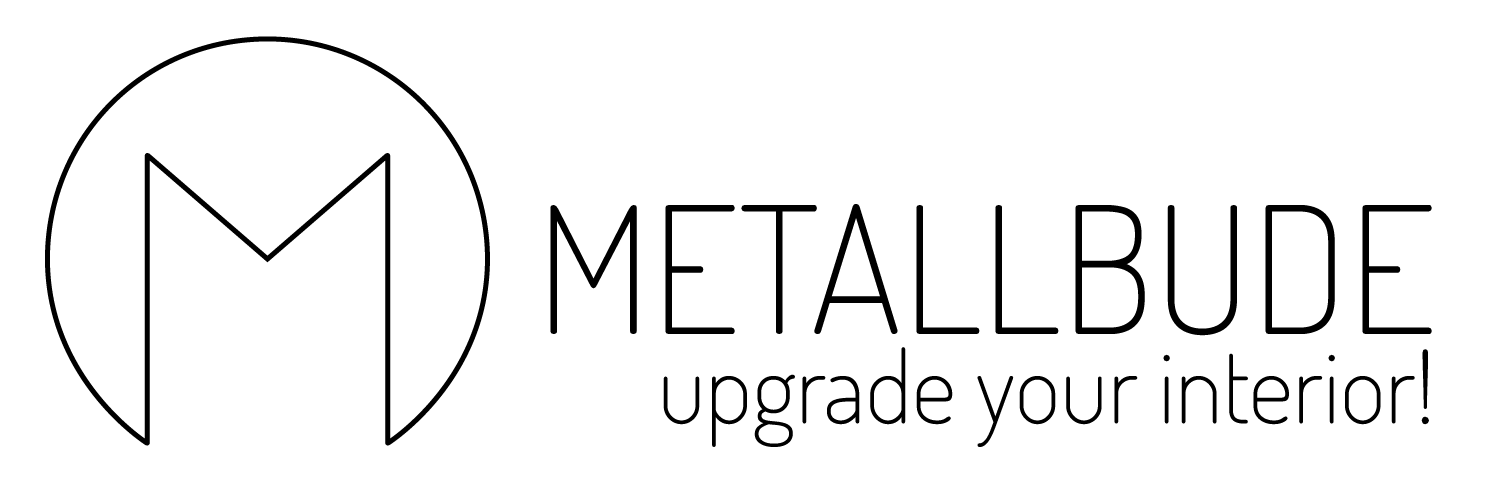From the factory hall to the living room: Skillfully implementing industrial style with metal furniture
Inspired by urban environments, the industrial interior design style uses raw materials such as steel, iron, and concrete to create a robust look. Metal furniture like industrial shelves, factory chairs, and metal tables become key pieces. The rustic charm of weathered metal adds authenticity and character. Combined with bare brick or wooden accents, a harmonious balance between roughness and coziness is created. Industrial lighting, such as pendant lights with wire cages, completes the look. The industrial style with metal furniture creates a unique aesthetic that recalls past times yet is contemporary and expressive.

These tips will help you set up with metal furniture
Setting up with metal furniture creates an industrial and modern look. To achieve this in your own rooms, there are five golden rules to consider:
- Consider the balance between metal and other materials to avoid overwhelming the room. Combine cool metal with warmer elements like wood to create a cozy atmosphere.
- Pay attention to the color palette: Dark metal goes well with neutral colors, while lighter metal harmonizes with bold colors.
- Play with contrasts: Soft upholstery or rugs contrast the hard metal.
- Emphasize the robustness of the furniture by maintaining a minimalist style and not overloading the room.
- Consider how the lighting emphasizes the metal - pendant lights or wall lights set accents.

Raw Charm: Metal as a Dominant Element
The industrial decor is characterized primarily by the raw charm of metal as a dominant element. Steel beams, metal tables and shelves are characteristic features of this style. Metal is not only used as a functional material, but also as an aesthetic statement. Rough steel and weathered metal give the room a distinctive authenticity.To emphasize the industrial look, it is important to consider the combination with brick walls, concrete floors, or bare masonry. Metal contrasts, such as dark iron next to light concrete, create visual interest. Furnishing with a dominant metal element brings the industrial heritage into the room and creates an impressive, urban atmosphere.
Create contrasts: Metal and wood in combination
The combination of metal and wood creates fascinating contrasts in the decor. This fusion of hard and soft elements creates a balanced aesthetic with visual appeal. Dark metal next to warm wood enhances the contrasts and gives the room depth.Industrial metal accents such as chairs or lamps in combination with a wooden table create an impressive balance between robustness and warmth. It is important to pay attention to the color coordination: dark metal goes well with darker wood, while lighter metal harmonizes with lighter wood. The combination of metal and wood gives the room character and variety, while at the same time creating a timeless and appealing decor.

Functionality in focus: Furniture with clear utility
In industrial decor, functionality is at the forefront, and furniture with clear utility plays a central role.Each piece not only fulfills a practical purpose but also contributes to the aesthetic statement. Metallic shelves provide sturdy storage space, while metal tables serve as work surfaces. Industrial workbenches and stools combine utility with a distinctive look. Folding metal chairs fit perfectly into the space and are still easy to move. The combination of functionality and aesthetics reflects the sober efficiency of the industrial style. In this setup, furniture becomes tools that organize the space while also possessing visual expressiveness.
Open Structures: Shelves and Racks with Industrial Charm
Shelves and racks with industrial charm are distinctive elements in the industrial setup, as they create the desired open structures.Metallic frames with airy construction not only provide practical storage space, but also set a striking visual accent. Shelves with open bottoms allow the presentation of items in a space-filling style. These designs reflect the raw aesthetics of workshops and recall past times of production. By combining functionality and industrial flair, open structures help to organize the space and give it character.







Share:
Black Furnishings in Trend
Furnishing Minimally & Sustainably